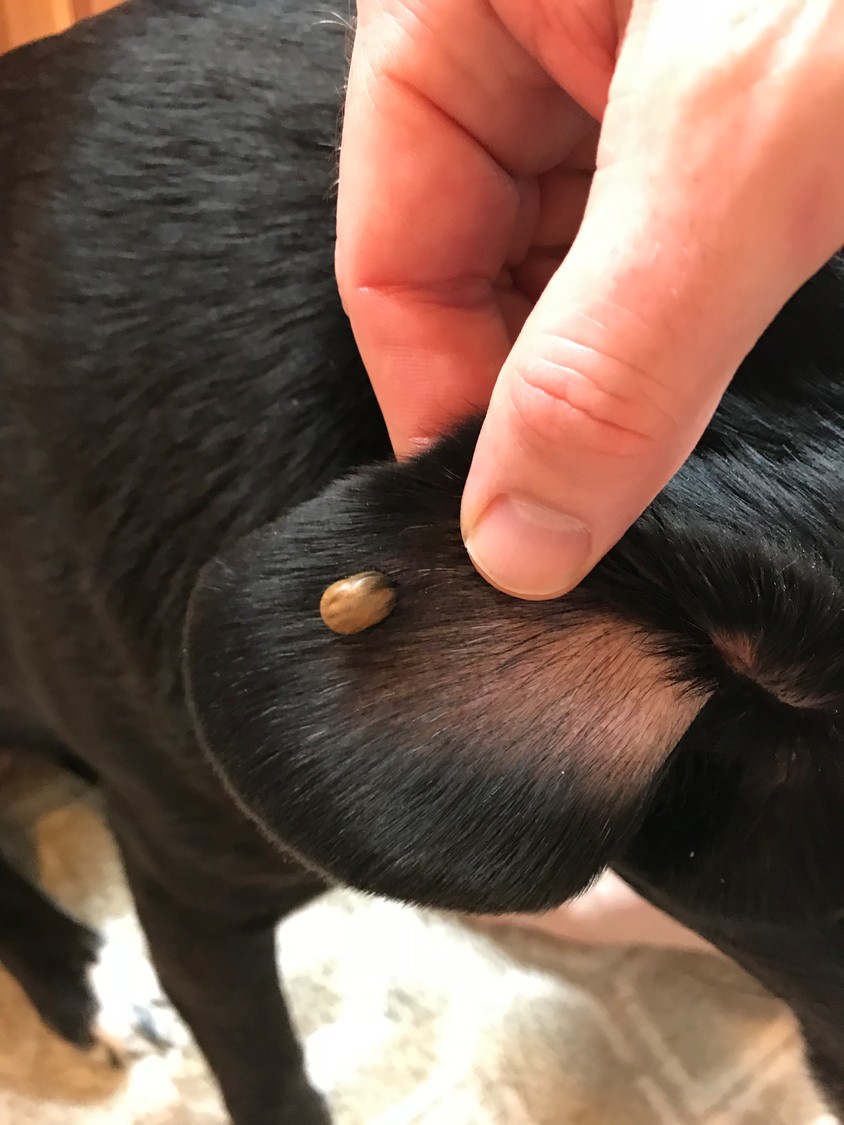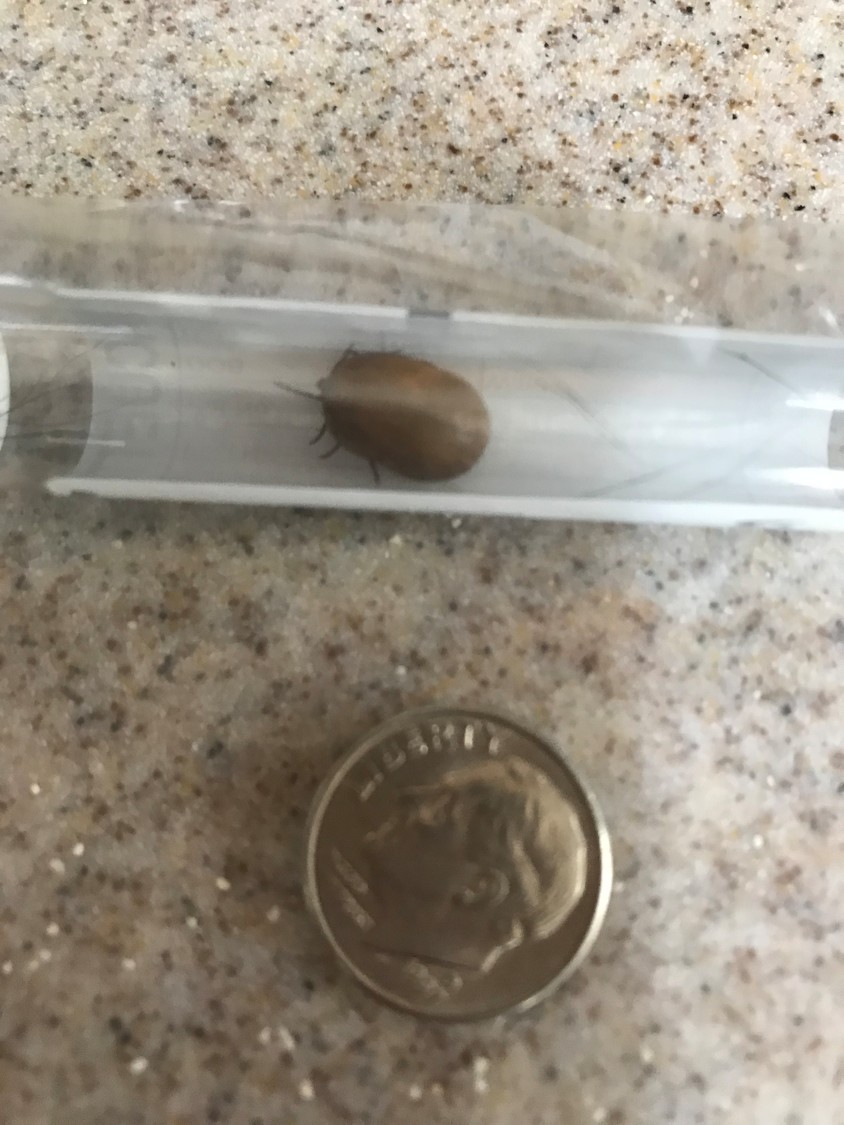Wantagh dog contracts Lyme Disease from tick bite
Doctors and other officials at Nassau University Medical Center and South Nassau Communities Hospital say there has been a recent explosion of disease-borne ticks on Long Island.
A new, equally dangerous tick has also been found Northwest of New York City and experts believe they could spread to Long Island.
Officials from NUMC held a press conference on July 19 to warn locals that the tick problem on Long Island can cause long-term health difficulties such as cognitive damage and, in certain cases if left untreated, death.
Wantagh resident Anna Maguire and her son, Conor, have experienced the effects of the tick explosion first hand, when their dog contracted Lyme disease from a bite on May 12.
Conor also found over a dozen ticks on his clothes after spending time at the fishing pier at Jones Beach toward the end of June.
The mother and son noticed a tick on their dog, Jackie’s, ear when Conor came back from walking the eight and a half year old black labrador retriever mix by the bridge in the woods around Forest Lake Elementary School, Anna said.
The tick was removed and given to Anna at a veterinary emergency center. She said the tick was tested at South Shore Veterinary Group in Bellmore where Jackie was given a round of one-month antibiotics. One month later, the dog was brought back to the veterinarian for a blood test, which showed positive results for Jackie having contracted Lyme.
Anna said before the blood test, Jackie was showing weakness and trembling in her front paws.
According to Doctor Shafi Shaik, of the Animal Hospital of Long Island in Hempstead, doxycycline, an antibiotic, can be used to treat and cure Lyme Disease in animals. Shaik said it depends on how long the disease has gone unnoticed and untreated.
Shaik has seen more tick-borne disease and bite cases in animals near the offices where he practices, specifically in Huntington Station, Plainview and Woodbury.
NUMC President Paul Pipia said the recent explosion could be from people spending more time outside during the nicer weather because they’re more likely to interact with the ticks or carry them on their clothing or body.
Jim Skinner, an associate certified entomologist and owner of A&C Pest Management in East Meadow, attributes the recent spike in tick encounters to the increasing number of rainy days this summer. “Ticks dry out in the sun,” he said, “which is why they are typically found in leaf litter and tall grass.” But when there is more moisture in the air, it provides ticks with more places to survive.
“Just be vigilant,” he said. “You have to go ahead and check your whole body each time you go into the woods.”
The Association of Mature American Citizens (AMAC) sent out a release on Aug. 3 warning that disease-born tick attacks could continue into autumn. The elderly have weaker immune systems and are therefore more susceptible, according to Dan Weber, president of the Association of Mature American Citizens.
A new tick, known as the Longhorn, has been found in multiple locations in Westchester County, as well as parts of New Jersey. Pipia questions how fast the ticks will multiply, and when they will start traveling to Long Island.
“[It is] only a matter of time before they start coming,” Pipia said.
Dr Aaron Glatt, chairman of the department of medicine at SNCH and spokesperson for the Infectious Diseases Society Of America, said there is “absolutely” a tick problem on Long Island.
But Glatt said he is more concerned with the illnesses the ticks cause rather then the ticks themselves. Lyme’s Disease, he said, is a big problem for Long Island.
“When I say ‘tick problem’ there certainly is potential for ticks to transmit diseases to human beings,” Glatt said.
According to Pipia, Longhorn ticks travel in swarms. They attack livestock and, like other ticks, can travel on various animals such as birds and dogs, and can reproduce asexually.
Brian Stieglitz contributed to this story

 47.0°,
Fair
47.0°,
Fair 









